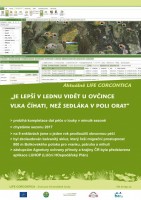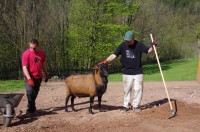Sensitive management plans at farms
In the 2015 season, the implementation of 9 management plans (so-called "farms") in the territory of KRNAP began.
Dwarfs combine common economic care (mowing, grazing), small superstructures over its common framework (phasing, mosaic, etc.) and "special interventions" known from the articles on the workgroup (struggle against invasive plants, scraping, stone picking, here: Special interventions. For special interventions, landlords (not only farmers, but also owners and our workers) must have valid permits and exemptions from the law (Water Law, Chemical Handling, Woodcutting Permit, etc.).
All these activities take place on farms with registered land blocks, where classical farming is already running. Spatial management plans are specially developed for these soil blocks, so they are "tailor-made".
The so-called framework contracts were concluded with the landlords, and the work could begin.
Let's give a few explanatory terms to the superstructure activities that take place at farms:
• The phased shovel is a classic farm, but instead of mowing the whole meadow, the farmer always cuts off the farm. Individual cutters should have a certain amount of time apart, preferably from 3 weeks to a month, thus ensuring a continuously flowering area on the meadow. This creates a mosaic of both care and stand. The mosaicity will allow for the settlement of desirable plants, enough blooming herbs for nectar, as well as animal shelters.
• We can also help the meadows and animals by leaving uncut areas, the so-called invertebrate belts, which are left to the next year. The reasons are the same as for phase cutters, plus the possibilities of winter cover for invertebrates and the possibility of completing their development.
• Autumn fertilization is a superstructure for classical farming. With a low dose of compost, we try to improve the nutrient status of poor meadows. We want to increase the species diversity and have beautiful flowery meadows. After fertilizing in the autumn, it is advisable in the spring of the next year to ride for even composting of the compost on the meadow and to break the lumps that could occur during the winter or during the application of manure.
• Springtime is also a superstructure activity. During dragging, the turf is disturbed mainly by undesirable grassy grasses (eg hardwoods), excavation of old age and general aeration of the stand. In the pasture, it is suitable for straw stratification, similar to the use of springing after autumn fertilization.
And if your recommendation for sensitive management and the reasons for these recommendations are a little more interesting, you can browse our Pestrolučník krkonošský.






